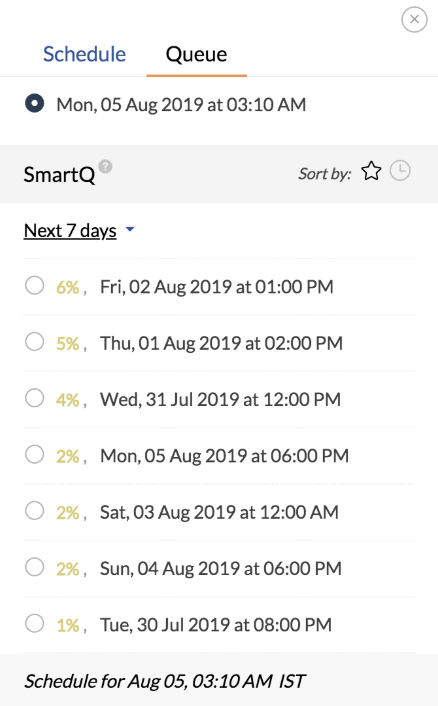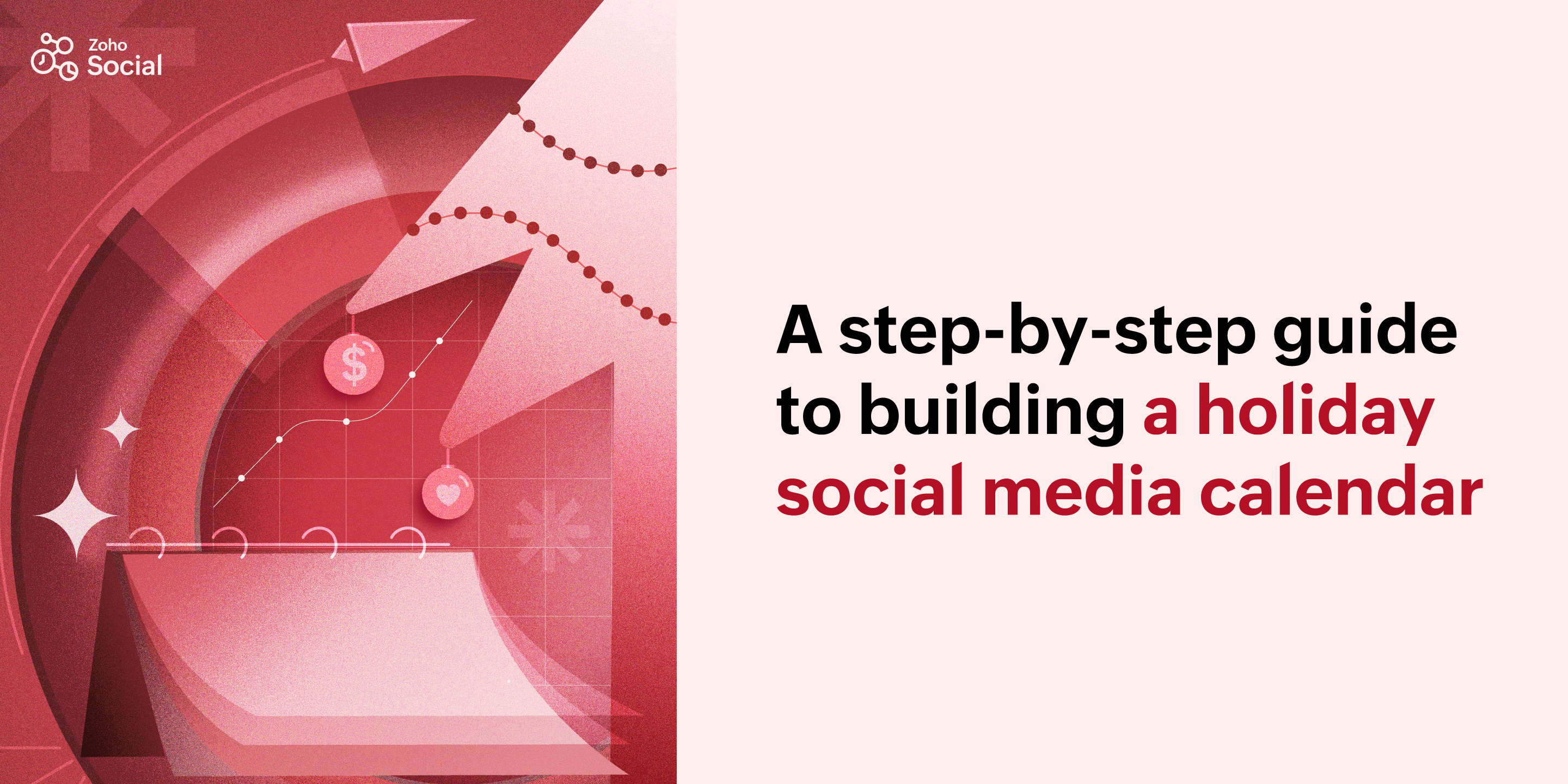How to beat the Instagram algorithm and gain more organic reach
- Last Updated : August 17, 2023
- 5.5K Views
- 9 Min Read

Over the last few years, there have been periodic spikes and dips in the organic reach of Instagram content. Goes without saying that this phenomenon has frustrated Instagram-savvy brands and influencers across the world. This can be attributed to Instagram’s feed algorithm and the changes that they keep making to it.
So what is the algorithm, and how has it changed?
A lot of it can be attributed to Instagram’s commitment to providing relevant content to its users, which also explains the recent purges of fake and spam accounts, and bots. Consider this, Instagram took roughly four years to reach their first 300 million users. In June 2016, there were 500 million active monthly users. Between 2016 and 2107, they added the same number in almost a year—and as of June 2018, the platform boasts over 1 billion monthly active users.
With the platform growing at such a breakneck speed, there’s going to be a lot of content generated. There’s constant competition among users to show up on people’s feeds, and that’s where the problem comes in. Out of all the content that Instagram could potentially show you, they only want the most relevant and useful stuff. This seems to create problems for brands, as the algorithm makes it harder to target audiences and gain followers, and even leads to declining engagement on posts. But the damage can be mitigated. As brands, if we figure out how this algorithm works, and what we can do to work around it, we can take better control of our Instagram marketing strategy.
The history of the Instagram algorithm
To better understand today’s algorithm, it helps to know the history of the app and why these changes have been made in the first place. When the app was initially launched in 2010, the feed was simply organized in reverse-chronological order. The newest post appeared at the top of the feed, and the oldest one appeared at the end.
With Instagram’s rising popularity, it became impossible for people to keep up with the sheer quantity of content that was being generated. That’s when Instagram decided to implement an algorithm to organize the content more effectively. The goal was to show only relevant content to users, which would both make the app more enjoyable for its users, and keep them using the app, as well.
In 2016, Instagram announced that the feed would prioritize “moments you care about” first, ending the reverse-chronological feed. More emphasis started being placed on content from friends and family over marketing content, and in 2018, we had another update to give priority to timely posts as well. This update, and the ones after it, remained vague, and it wasn’t until early this year that Instagram finally cleared everything up in a series of tweets.
So where do we stand today?
How the algorithm works
The Instagram algorithm uses “ranking signals” to determine how they’re going to arrange the feed for each person. Here are the most important things that we’ll need to keep in mind going forward:
Interest
The Instagram algorithm predicts what posts you might be interested in based on past behavior. The more they think you’ll like that post, the higher it appears in your feed. This could potentially be based on image recognition analyzing the content of the posts you interact with.
This is similar to how the Facebook algorithm and the YouTube algorithm filter and recommend content. So, users who like comics are more likely to see comics at the top of their feed, and users who like cat videos are more likely to see cat videos on theirs.
Relationships
Instagram’s algorithm prioritizes content from friends and family over other content. How do they know who these friends and family are? They look at the accounts users are interacting with a lot.
If a person leaves comments on your posts, or you leave comments on theirs, or if they have notifications enabled for your account, or if you DM each other, or you tag each other in your posts, then it’s more likely that you’ll see posts from them on your feed. The algorithm will classify you as “close,” and then adjust your feeds accordingly.
Instagram says this setup allows users to see more posts from the people who matter most to you. Back when feeds were organized in reverse-chronological order, they estimated that users would miss 70% of this content.
Timeliness
Finally, Instagram also takes into account the time the image was posted. Newer posts are given preference over older posts. However, this isn’t the same thing as reverse-chronological order, because in this case, the time of posting is just one of the many factors that determine where the post shows up on your feed.
This has an evident consequence: brands have to find out when their audiences are most active, and then try to post at that particular time. This will ensure that the posts are somewhere near the top of the users’ feed, and can get more engagement. A social media marketing tool can help you find the best time to post for your brand.

Best practices for Instagram
1. Improve image quality
One of the best things you can do to rank higher on the algorithm is to have high quality images. In fact, this is an essential Instagram tip, and will always be the case, regardless of how the algorithm changes.
Great content will undoubtedly rank higher, and while it’s subjective what good content is, it’s also known that the most liked or shared content on Instagram is usually visually pleasing.
Fortunately, this is not something that’s difficult to do. You can read our blogs on taking the perfect picture for Instagram, and also learn how to edit your Instagram pictures, as well.
2. Publish more stories
Yes, you heard that right.
It may not seem like Stories have much to do with how content appears on the Instagram feed by itself, but Stories are essential to your Instagram strategy. They’ve become increasingly popular ever since their introduction, and recently hit 500 million daily users. The raw, authentic feel that Stories give is what makes it so popular, and is something that your brand can use to its benefit. There’s also the fact that the Stories you put up will show at the top of the feed, so it’s going to be pretty hard to miss.
How does this help your algorithm ranking? Well, if you’re doing Stories well, you’re going to be in front of your audience consistently. This means your audience is more encouraged to check out content from your brand, which is great for engagement. And every time someone replies to your Story, or starts a conversation with you based on something you put up, that’ll all count towards the “relationship” ranking signal, so the pictures you post will then be more likely to show up on their feed.
3. Post more videos
Instagram says that they don’t prioritize video content over images by default. However, if someone scrolls past video content a lot, they’re less likely to see it. This is because of the “Interest” ranking signal that Instagram uses.
However, statistically, people are more likely to stop and watch videos. Video consumption on Instagram has increased by 80% year on year. And since video autoplays on Instagram, it’s more likely to catch someone’s attention when they’re just scrolling past their feed, which again means they’re more likely to engage with your post.
Instagram seems to be directly pushing video content more recently. The best example of this is IGTV. While the format is inherently video-centric, the intriguing part is the fact that Instagram later announced that IGTV content will begin appearing in your followers’ feeds, rather than just being confined to the IGTV section. This is a good indicator that Instagram wants to see creators producing more video.
4. Go live often
Another thing that you can do to give your profile a boost is to start posting live videos more often. Live videos are similar to stories, in the sense that they don’t have any direct impact on the algorithm. However, they can be very useful for generating engagement for your brand.
Going live has two distinct advantages. Firstly, your audience will get notified when you go live, which makes it more likely for them to tune in and interact with you. And secondly, it shows up at the top of the news feed along with Stories, so it’s given prime placement.
Not only do Live videos show up at the top of the feed, they’re also placed before the Stories that other people have posted. Live videos are the first thing that your audience will see when they open the app, and this can be a great way for you to boost your engagement.
5. Work on your captions and hashtags
One of the best ways to ensure that you rank higher in the algorithm is to focus on the captions and hashtags you’re using. Like we’ve already mentioned, Instagram wants to put friends and family first, and decides that based on post engagement.
How can captions help with this? The best way to increase engagement organically is by adding a call to action in the caption. Ask your followers a question, and get them to respond in the comments. You could even ask your followers to tag a friend in the photo as part of a contest. All of this will help you rank more favorably on Instagram, and get more eyes on your posts.
Make sure you don’t overdo it, though. Doing this on every post isn’t advisable, considering how Facebook punished engagement baiting for people who tried to work around their algorithm. The key to this is to integrate these posts within your feed without going overboard.
Hashtags are also a great way to get eyes on your post, and that’s potentially a larger pool of people for your brand to interact with. Including hashtags in your posts also makes the posts searchable. You’ll need to ensure that you don’t use too many hashtags, or any irrelevant ones either, or you’ll come off as spammy. Check out our guide to learn how to craft a hashtag for your brand.
6. Run more contests
One of the fastest ways to get a spike in engagement is to run an Instagram contest. Contest posts are almost always extremely well-engaged, and whether it’s creating user-generated content, or simply answering questions on a quiz, they can create a surge of attention for your brand.
Contests, however, take some preparation. You’ll need to know exactly what you’re expecting your audience to do. Make sure that the contest that you’re running is something that’s fun, so that more people are pushed to take part, and ensure that it’s something that isn’t too difficult. A difficult challenge prevents people from participating, and that means you won’t be getting the engagement that you’re looking for. The instructions for the contest also need to be specific. If you’re running a contest where you expect your audience to create content, make sure you allow enough room for creativity so people can express themselves.
For the winners, a simple giveaway, or a discount that features any of your products will work wonders. When done correctly, these contests can bring a lot of attention to your brand, and you can be sure that the algorithm will have noticed.
7. Post more often
Don’t be afraid to post a lot. As this excerpt from Recode will tell you, Instagram themselves have confirmed that there is no downranking for too much posting.
Can you be downranked for posting too much on Instagram?
“No, we don’t down-rank people for posting [frequently]. We do make sure your feed feels diverse so we may break up posts”
Posting more often will help you experiment with different types of posts, and you’ll be able to figure out which one works best for your brand. You may also consider using a content calendar to spread out your posts more evenly.
8. Be proactive in engagement
While we’ve discussed the different ways you can boost your algorithm ranking, we’ve mostly talked about how you can get people to engage with you, so that it boosts your relationship score. Another thing you should consider is being proactive in your engagement with your audience.
Proactive engagement is more about identifying opportunities for you to jump in and start conversations, even if they didn’t directly involve you in the first place. The best way to do this on Instagram is to follow the hashtags that are relevant to you. For example, if you’re a travel agency, you might want to follow #vacation. If you find a post about planning vacations, you can join the conversation and maybe win yourself a new follower or two.
A social media management tool can be of great help in this regard, as they sometimes come with monitoring features that help you monitor specific hashtags. Some tools will even allow you to repost content from another profile. This is a great way to share user-generated content onto your Instagram profile. All of this can not only get fresh eyes on your brand, but also leave a great impression.
Beating the Instagram algorithm doesn’t have to be complicated. If we understand exactly how the algorithm works, we can formulate a successful strategy around it. In the current algorithm, it’s all about establishing relationships with your audience, and providing them with timely, useful content. Do this, and you’ll slowly see your engagement grow.
That’s it from us for today! Have any questions, or something to add? Let us know in the comments section below!
 Vishal
VishalContent writer at Zoho Social, stand up comedian, and lover of dogs. I read a lot.



Comments(1)
This is an outstanding post that’s filled with so many useful nuggets. Thank you for being so detailed on How to beat the Instagram algorithm and gain more organic reach.